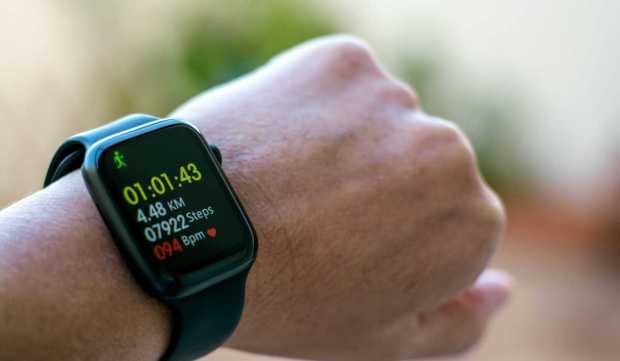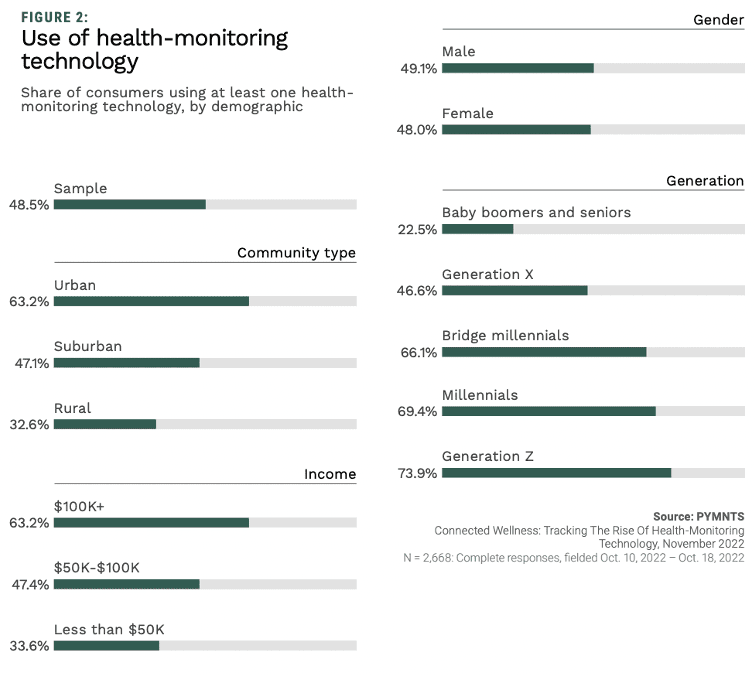Wearable Healthcare Tech Trend Driven by Millennials

Over two-thirds of Generation Z and millennial consumers track their health using wearable heathcare tech.
That’s according to findings from “How Digital Has Changed the Consumer Healthcare Experience and Expectations,” a PYMNTS and CareCredit report. While nearly half (48.5%) of surveyed consumers are now using some type of health monitoring technology, it’s the younger, more urban consumers who are tracking and managing their health and wellness the most.

Digital-first patient generations are driving an evolution within the healthcare landscape as they leverage an ever-growing suite of connected devices, platforms and wearables for personalized recommendations and treatments supporting their physical and mental health.
The ability to meet these next-generation expectations will help determine the future healthcare delivery landscape.
Seventy million consumers use health-tracking apps and wearable smart devices to monitor their health between appointments, and the use of these health-tracking apps and connected devices more generally has grown by 21% since November 2021.
That represents a projected 21 million more U.S. consumers who have proactively decided to take control of their health by establishing a data-backed baseline from which to make better informed personal decisions.
Smartwatches are owned by one in every four adults, and this emergent, connected consumer audience tends to be wealthier, with 63% of consumers earning more than six figures using technology to monitor their health, compared to under half (47%) making between $50,000 and $100,000, and just one in three earning less than $50,000.
The connected health audience base also tends to reside more in urban areas, with over six in 10 consumers who live in cities reporting they track their health and wellness using a type of monitoring technology, compared to just under one in three rural consumers.
The digital-first patient is changing how healthcare is delivered, as these next-generation audiences come to expect the same convenience, speed and accessibility from healthcare delivery networks and providers as they do from their online shopping experiences.
More broadly, this means that immediate, easy-to-use services and seamless digital payments can help healthcare businesses attract consumers and build a competitive moat.
